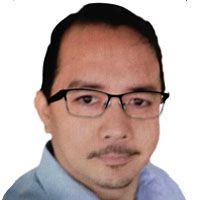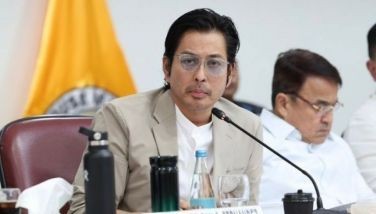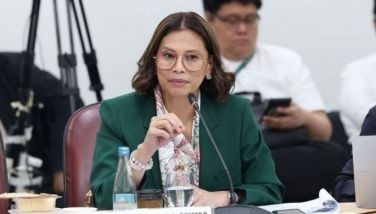Bullish on the Philippines

NADI – From this South Pacific island state, the economic weather forecast for the Philippines is fair, with a chance of rain showers but no major typhoon in the near future.
This is the country forecast of the Asian Development Bank, as far as I can glean from the briefings given by its officials and my chats with them in this Fijian city, where the ADB is holding its 52nd annual Board of Governors meeting.
Philippine Gross Domestic Product growth is forecast at 6.4 percent for 2019-2020 while inflation is seen easing to 3.8 percent this year and a further 3.5 percent in 2020.
The ADB does not expect the projections to be affected by political turbulence that is usual in an election year. Corruption is also not a problem, at least for projects funded by the ADB, according to the bank’s director general for Southeast Asia, Ramesh Subramaniam.
Even concerns about the country falling into a Chinese debt trap have no basis at this point, ADB chief economist Yasuyuki Sawada told journalists here last Wednesday, although it’s early days yet as the Duterte administration ramps up its borrowings from China to finance infrastructure projects under Build Build Build.
ADB president Takehiko Nakao modified this a bit in a press conference here yesterday, saying China must “pay attention (to) debt issues” related to its Belt and Road Initiative. Nakao noted that the BRI follows a tradition dating back to China’s Han Dynasty (from 206 BC to 220 AD), which fostered economic and other linkages from East to Central Asia and on to parts of Africa. “There are merits” to the BRI, he said, but projects for funding must be carefully chosen. The projects, he said, must have “good returns” and must not foster social disruptions or repayment problems.
“There are many debt issues related to the BRI,” Nakao said. “I think the Chinese should also pay attention to these issues.”
* * *
Nakao, a former vice finance minister for international affairs, was elected as the ADB’s ninth president in 2013, keeping the leadership of the Manila-based bank in the hands of the Japanese. There were reports that China would nominate a challenger, but in the end there was no other contender for the post.
Instead the Chinese, who have learned the value of projecting soft power, spearheaded the creation of the Beijing-based and Chinese-led Asian Infrastructure Investment Bank (AIIB), open for business for about three years now.
The ADB, a much larger organization, has avoided being pitted against the AIIB, and has instead moved to work on areas of cooperation with the new multilateral lender. ADB officials have said there are so many infrastructure development financing gaps that need to be filled, and those with the resources are welcome to meet the need.
President Duterte, in a speech at last week’s Belt and Road Forum in Beijing, said that development assistance must not foster dependence.
The aid, he said, “must be used as a genuine tool to bring about positive change in the lives of our peoples. And it must be a purposive decision of partner-states, taking into account mutual respect and mutual interests.”
As in his security pivot to China, however, his administration’s increasing availment of Chinese loans is being viewed with distrust, and it’s not only because of Chinese activities in the South China Sea. Beijing has disputed stories that it leads its client countries into a debt trap.
China is not a member of the intergovernmental Organization for Economic Cooperation and Development, which promotes best practices in development aid. But Sawada told me that Beijing has been willing to discuss and cooperate with the ADB on OECD-type best practices in its lending programs.
* * *
Apart from a debt trap, the Duterte administration has had to reassure Filipinos that Chinese-funded projects will be corruption-free.
The Filipino suspicion arises from corruption scandals involving Chinese projects in the past, among them the national broadband deal with Chinese telecommunications giant ZTE and the North Rail project that was derailed by accusations of fat kickbacks.
Subramaniam said that corruption has not been a problem for the bank in the Philippines, at least for its projects.
The ADB conducts due diligence and has a system of keeping track of project implementation, Subramaniam said. The bank strictly follows a set of procurement rules, tracks the project, and conducts its own periodic assessment throughout the implementation.
It even has a program, under its Office of Anti-Corruption and Integrity, to encourage people to report cases or indications of graft, with the assurance of confidentiality for the whistle-blower. The program is in line with the OECD’s open government initiatives.
Subramaniam cited as an example the ADB’s $300-million post-conflict reconstruction program in devastated Marawi, wherein the bank is working closely with the Department of Budget and Management, Department of Public Works and Highways, the local government and the Bangsamoro development task force.
Another project is the railway system connecting Malolos-Clark in Central Luzon to Metro Manila.
“We do not have any (corruption) issues in the Philippines,” Subramaniam said.
* * *
We know that the ADB is not the only one with a positive outlook on our country.
The Singapore-based ASEAN + 3 Macroeconomic Research Office (AMRO), which launched its 2019 regional macroeconomic outlook on the sidelines of the ADB meeting here, had a generally positive report on the Philippines.
For example, in contrast to warnings about the dangers posed by artificial intelligence to our booming business process outsourcing sector, the AMRO reported: “BPO services in the Philippines are highly diverse and they have evolved from the simple call service centers to provision of analytical services for radiology and accountancy, production of videos and other multimedia services, and online gaming and its supporting services.”
What we need is to sustain the growth. Also, compared with the progress of many of our Asian neighbors, we have been left behind.
When the ADB set up its headquarters in Manila in 1966, we were second only to Japan in terms of economic development in Asia. Look where we are situated in the region today.
We’re doing well economically, but we can still do much better. For this, reforms are urgently needed.
- Latest
- Trending


























